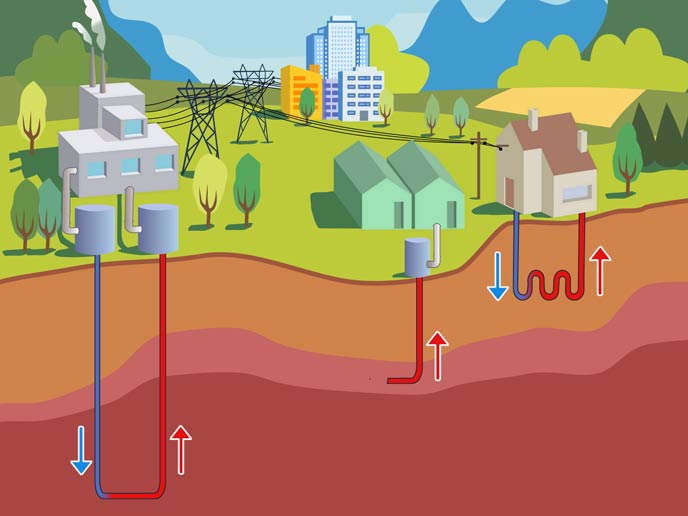Geothermal Energy: A new and viable alternative energy source to help achieve Europe’s climate ambitions
Geothermal energy is a local source of energy that can cost‐effectively provide baseload or dispatchable electricity, heat or a combination of both. It has already been used for thousands of years by humans (for example, bathing in hot springs and room heating in ancient Roman times) and today has the potential to provide a real alternative to conventional fossil fuel power plants and heating systems emitting considerable quantities of greenhouse gases. This would be not only in Europe but also globally, in particular developing countries. In addition to simply producing energy, geothermal reservoirs may also act as energy and CO2 storage sites, providing another major benefit of the technology.
A strong policy framework
The European Commission fully supports research and development in geothermal technologies, funding research projects through its Horizon 2020 programme on both the direct use of heat and the use of extracted heat for electricity generation focussing on cost reductions and improved performance. Historically, the funding levels for this form of renewable energy have been particularly low when compared to alternatives, such as wind, solar and biomass, but it has recently increased. For example, the EU’s Innovation & Networks Executive Agency (INEA), which manages almost all of the projects in this specific Results Pack, has a total budget of EUR 172 million allocated towards geothermal energy. Now, following the announcement of the Commission’s dedicated Green Deal, where the Commission has set the ambition for Europe to become the first carbon-neutral continent by 2050, the impetus to further develop and eventually deploy geothermal technologies as a viable and serious contender as part of the EU’s energy mix will only increase further.
Twelve truly trailblazing projects
In this Results Pack, we feature 11 full CORDIS Results in Brief articles on the most recent EU-funded geothermal energy projects, plus a short introduction to a still ongoing but very promising initiative, GEOTHERMICA. These 12 projects cover the full spectrum of geothermal energy research and provide a holistic overview of what the key priorities are for further development and investment in these technologies so they become a vital source of alternative energy for Europe. In particular, the DEEPEGS project has undertaken successful drilling tests in Iceland and beyond to help develop enhanced geothermal systems that will bring geothermal energy from an outsider to a major player, whilst the GEMex project has been working with Mexican researchers to assess and characterise two sites in the Trans-Mexican Volcanic Belt in order to propose efficient and achievable means for tapping into Mexico’s geothermal potential. Meanwhile, SURE tested the use of radial water jet drilling as a means of improving the importance and economic viability of geothermal wells, and the GeoWell project developed and tested new, reliable, economic and environmentally safe technologies for the design, completion and monitoring of high-temperature geothermal wells. Finally, the Cheap-GSHPs, GEOCOND and GEOTeCH projects have been investigating and spearheading new innovations for how geothermal energy can be used as a clean energy source to heat and power buildings, whilst the MATChING project spearheaded European efforts to reduce the demand for cooling water through innovative technologies in thermoelectric and geothermal power plants.

